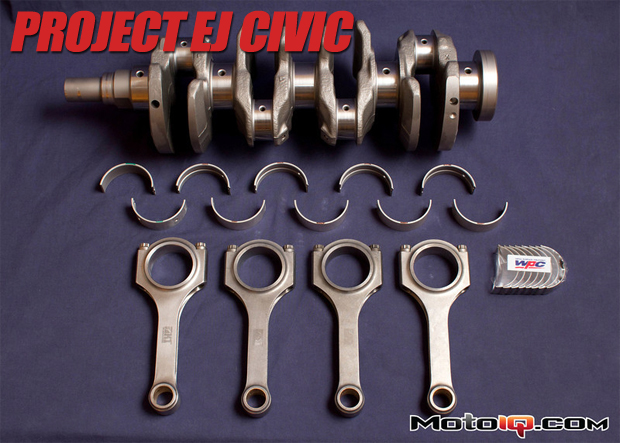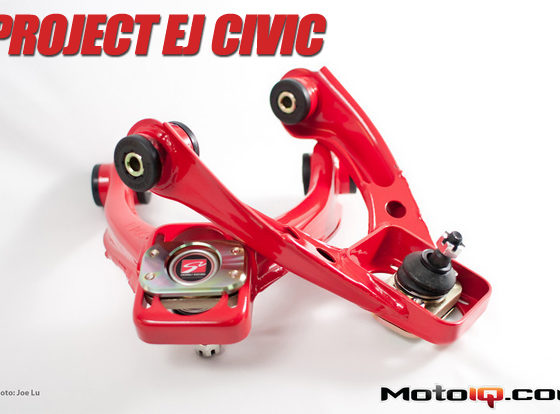Project Honda Civic EJ
Building the B18C1 Engine Part 2: Improving Rod Ratio
Words by Chuck Johnson
Pics by Joe Lu
Our main goal for Project Honda Civic EJ is to build a formidable, yet reasonably economical weekend warrior. However, we didn't want our “budget” project scope to limit us to merely rebuilding a stock configuration B18C1. Admittedly, we also wanted the challenge of trying something new rather than simply building another stroker B-series.
In recent months, there has been a lot of talk on MotoIQ about lengthening connecting rods to improve an engine's rod to stroke ratio. Specifically, a few weeks ago we covered how Mike and I managed to shoehorn a Honda H22 rod into a Nissan SR20VE to improve its rod ratio from 1.58:1 to 1.66:1, but what is rod ratio and why all the recent talk?
Rod Ratio 101 (nerds skip ahead)
Before I get started, I've found that some of our less nerdy readers (you know the ones with prospering social lives and non-imaginary, super hot girlfriends) are confusing rod to stroke ratio with stroking an engine. Before I go any further, let me clarify that “stroking” an engine is increasing its displacement by lengthening the “throw” of the crankshaft. For example, the Honda D16A1 1.6 liter has a stroke of 90 MM where as a 1.5 liter D15B has a stroke of 84.5 MM. The 5.5 MM longer crankshaft “throw” (or stroke) of the D16A1 is what makes it slightly larger in displacement although the two engines have the same bores of 75 MM. Simply put, increasing stroke increases an engine's displacement and has little to do with improving an engine's rod ratio.
Rod to stroke ratio is merely a means of expressing the relationship between an engine's rod length and its stroke. As an example, we can calculate an SR20DET's rod ratio by dividing its rod length of 136.3 MM by it's stroke of 86 MM. This simple math will yield a rod ratio of 1.58:1. So why fiddle with an engine's rod ratio? In brief, improving rod ratio:
- Reduces piston acceleration increasing the piston's dwell time near TDC, which could improve scavenging at high RPM.
- Reduces piston side loads, which translates into a reduction in friction as well as piston skirt and cylinder wear.
- Positions the piston higher in the cylinder to take advantage of peak cylinder pressures.
For a more in depth explanation of the effects of rod ratio, check out Khiem Dinh's article here.
Conceptualizing the Long Rod
After the experiment with Mike's SR20VE yielded some promising results, I figured why not try it the other way around this time and use a Nissan connecting rod in a Honda engine? When we first conceptualized the SR20 long rod engine, the H22A rod caught my eye because it shared the same big end bore diameter of 2.008″ as the SR20DE. A quick review of both FSMs would reveal that the two engines also shared a common crank pin diameter. This meant that the bearing shells were the same thickness and the combination would most likely work.





